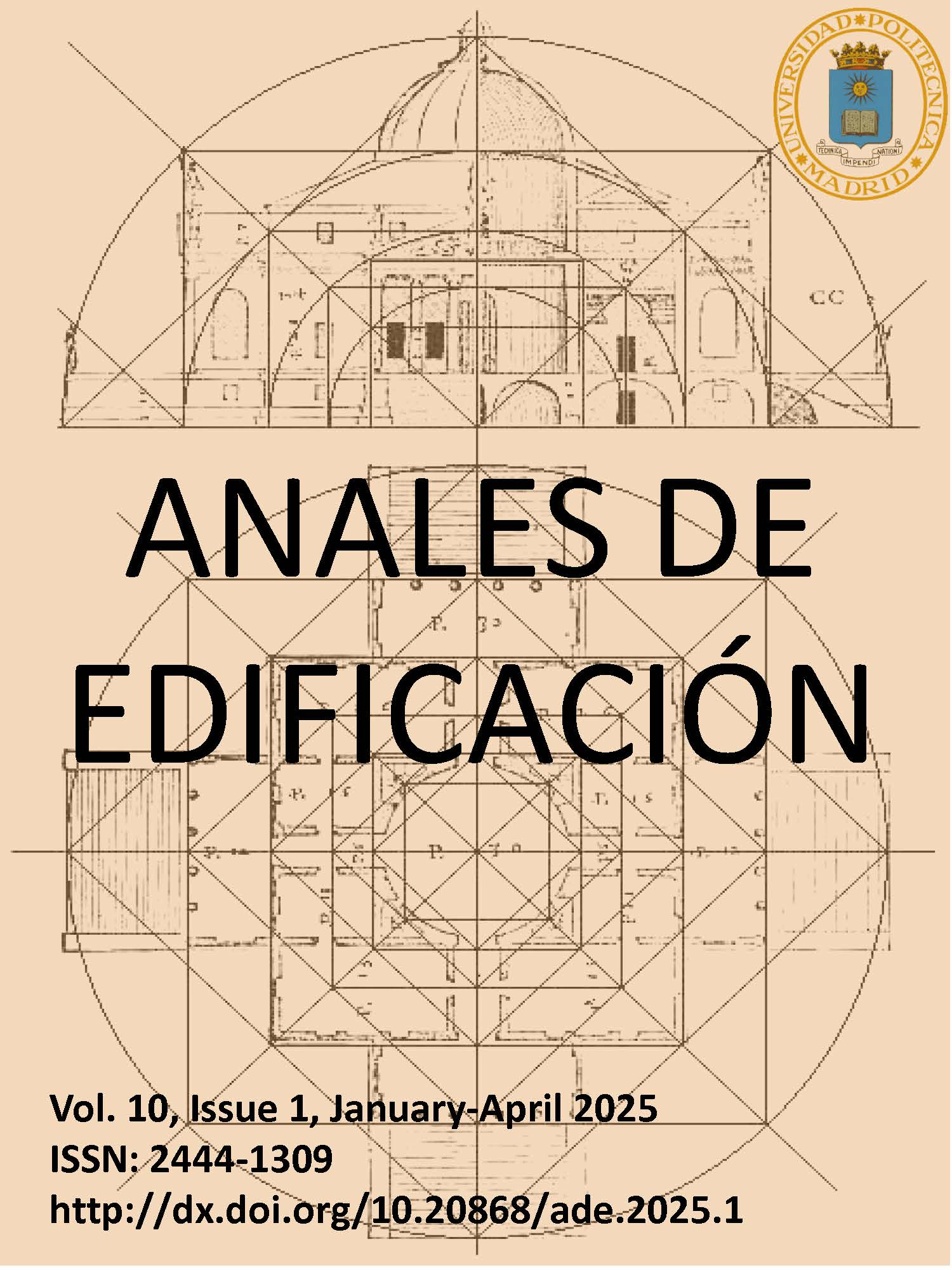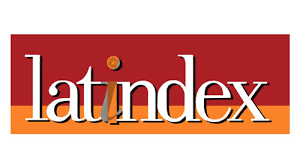Evolution of the heat stress index of the city of Madrid using the URBCLIM climate model of the European Space Agency
DOI:
https://doi.org/10.20868/ade.2025.5387Keywords:
Heat stress index, UrbClam model, local climate zones, heat mitigation, urban climateAbstract
Global warming is generating significant increases in environmental temperature that is affecting people's quality of life. Today, 30% of the world's population resides in places that have extreme heat weather conditions, and this is expected to increase to 74% in the next two decades. In this research, the evolution of the heat stress index (Hi) between 2008, 2012 and 2017 in the different Local Climate Zones (LZs) of the city of Madrid has been analysed using the UrbClim climate model of the European Space Agency. Using Landsat 5 and 8 satellite images and for each ZCL, the following variables have been considered: Normalized Difference Vegetation Index and the Normalized Difference Building Index.. Our results report that there has been a significant increase in heat stress values between the years, being higher in the ZCL-2, 3, 4, 5, 6, 8 and 9 and lower in the ZCL-for rural use (ZCL-A, B, C, D, E, F and G). Therefore, it is necessary to increase green areas and spaces and the use of facades and green roofs in urban areas in order to increase the heat resistance of urban areas.
Downloads
References
1. An N, Dou J, González-Cruz JE, Bornstein RD, Miao S, Li L. An observational case study of synergies between an intense heat wave and the urban heat island in Beijing. Journal of Applied Meteorology and Climatology. (2020); 59:605–20.
2. Anjos M, Targino AC, Krecl P, Oukawa GY, Braga RF. Analysis of the urban heat island under different synoptic patterns using local climate zones. Building and Environment. (2020); 185.
3. Arnfield AJ. Two decades of urban climate research: A review of turbulence, exchanges of energy and water, and the urban heat island. International Journal of Climatology. (2003); 23:1–26.
4. Avdan U, Jovanovska G. Algorithm for automated mapping of land surface temperature using LANDSAT 8 satellite data. Journal of Sensors. (2016);20 16-23.
5. Brooke Anderson G, Bell ML, Peng RD. Methods to calculate the heat index as an exposure metric in environmental health research. Environmental Health Perspectives. (2013); 121:1111–9.
6. Brousse O, Georganos S, Demuzere M, Vanhuysse S, Wouters H, Wolff E, et al. Using Local Climate Zones in Sub-Saharan Africa to tackle urban health issues. Urban Climate. (2019); 27:227–42. Available from: https://doi.org/10.1016/j.uclim.2018.12.004
7. Chavez PS. An improved dark-object subtraction technique for atmospheric scattering correction of multispectral data. Remote Sensing of Environment (1988); 24:459–79.
8. Congedo L. Semi-Automatic Classification Plugin Documentation Release 4.8.0.1. Release. (2016); 4:29. Available from: https://media.readthedocs.org/pdf/semiautomaticclassificationmanual-v4/latest/semiautomaticclassificationmanual-v4.pdf
9. De Ridder K, Lauwaet D, Maiheu B. UrbClim - A fast urban boundary layer climate model. Urban Climate. (2015); 12:21–48. Available from: http://dx.doi.org/10.1016/j.uclim.2015.01.001
10. Demuzere M, Kittner J, Martilli A, Mills G, Moede C, Stewart ID, et al. A global map of local climate zones to support earth system modelling and urban-scale environmental science. Earth System Science Data. (2022); 14:3835–73.
11. Diallo-Dudek J, Lacaze B, Comby J. Land surface temperature in the urban area of Lyon metropolis: A comparative study of remote sensing data and MesoNH model simulation. 2015 Joint Urban Remote Sensing Event, JURSE. (2015); 2–5.
12. Emmanuel R, Krüger E. Urban heat island and its impact on climate change resilience in a shrinking city: The case of Glasgow, UK. Building and Environment. (2012); 53:137–49. Available from: http://dx.doi.org/10.1016/j.buildenv.2012.01.020
13. Equere V, Mirzaei PA, Riffat S. Definition of a new morphological parameter to improve prediction of urban heat island. Sustainable Cities and Society. (2020) ;56.
14. Founda D, Santamouris M. Synergies between Urban Heat Island and Heat Waves in Athens (Greece), during an extremely hot summer (2012). Scientific Reports. (2017); 7:1–11. Available from: http://dx.doi.org/10.1038/s41598-017-11407-6
15. Geletič J, Lehnert M, Savić S, Milošević D. Modelled spatiotemporal variability of outdoor thermal comfort in local climate zones of the city of Brno, Czech Republic. Science of the Total Environment. (2018); 624:385–95.
16. Guo A, Yang J, Xiao X, Xia (Cecilia) J, Jin C, Li X. Influences of urban spatial form on urban heat island effects at the community level in China. Sustainable Cities and Society. (2020); 53:101972. Available from: https://doi.org/10.1016/j.scs.2019.101972
17. Hass AL, Ellis KN, Mason LR, Hathaway JM, Howe DA. Heat and humidity in the city: Neighborhood heat index variability in a mid-sized city in the Southeastern United States. International Journal of Environmental Research and Public Health. (2016); 13.
18. Hidalgo García D, Arco Díaz J. Modeling of the Urban Heat Island on local climatic zones of a city using Sentinel 3 images: Urban determining factors. Urban Climate (2021); 37.
19. Hua L, Zhang X, Nie Q, Sun F, Tang L. The impacts of the expansion of urban impervious surfaces on urban heat islands in a coastal city in China. Sustainability. (2020); 12.
20. IPCC. The fifth report of the Intergovernmental Panel on Climate Change (IPCC). [Internet]. (2013). Available from: https://www.ipcc.ch/report/ar5/wg1/
21. Jacobs C, Singh T, Gorti G, Iftikhar U, Saeed S, Syed A, et al. Patterns of outdoor exposure to heat in three South Asian cities. Science of the Total Environment. (2019); 674:264–78. Available from: https://doi.org/10.1016/j.scitotenv.2019.04.087
22. Kafy A Al, Faisal A Al, Rahman MS, Islam M, Al Rakib A, Islam MA, et al. Prediction of seasonal urban thermal field variance index using machine learning algorithms in Cumilla, Bangladesh. Sustainable Cities and Society. (2021);64: 102542. Available from: https://doi.org/10.1016/j.scs.2020.102542
23. Karakuş CB. The Impact of Land Use/Land Cover (LULC) Changes on Land Surface Temperature in Sivas City Center and Its Surroundings and Assessment of Urban Heat Island. Asia-Pacific Journal of Atmospheric Sciences. (2019); 55:669–84.
24. Khamchiangta D, Dhakal S. Physical and non-physical factors driving urban heat island: Case of Bangkok Metropolitan Administration, Thailand. Journal of Environmental Management. (2019); 248:109285. Available from: https://doi.org/10.1016/j.jenvman.2019.109285
25. Kotharkar R, Ghosh A, Kotharkar V. Estimating summertime heat stress in a tropical Indian city using Local Climate Zone (LCZ) framework. Urban Climate. (2021); 36.
26. Kovats RS, Campbell-Lendrum D, Matthies F. Climate change and human health: Estimating avoidable deaths and disease. Risk Analysis. (2005); 25:1409–18.
27. Kumar P, Rai A, Upadhyaya A, Chakraborty A. Analysis of heat stress and heat wave in the four metropolitan cities of India in recent period. Science of the Total Environment. (2022); 818.
28. Li B, Tao S, Dawson RW. Relations between AVHRR NDVI and ecoclimatic parameters in China. International Journal of Remote Sensing. (2002); 23: 989–99.
29. Li J, Song C, Cao L, Zhu F, Meng X, Wu J. Impacts of landscape structure on surface urban heat islands: A case study of Shanghai, China. Remote Sensing of Environment. (2011); 115:3249–63.
30. Martí Ezpeleta A, Royé D. Intensidad y duración del estrés térmico en verano en el área urbana de Madrid. Geographicalia. (2021); 95–113.
31. Mora C, Dousset B, Caldwell IR, Powell FE, Geronimo RC, Bielecki CR, et al. Global risk of deadly heat. Nature Climate Change. (2017); 7:501–6.
32. Nicholson SE, Farrar TJ. The influence of soil type on the relationships between NDVI, rainfall, and soil moisture in semiarid Botswana. I. NDVI response to rainfall. Remote Sensing of Environment. (1994); 50:107–20.
33. Rothfusz LP, Headquarters NSR. The heat index equation (or, more than you ever wanted to know about heat index). Fort Worth, Texas: National Oceanic and Atmospheric Administration, National Weather Service, Office of Meteorology. (1990); 23–90. Available from: papers://c6bd9143-3623-4d4f-963f-62942ed32f11/Paper/p395
34. Royé D, Sera F, Tobías A, Lowe R, Gasparrini A, Pascal M, et al. Effects of Hot Nights on Mortality in Southern Europe. Epidemiology. (2021); 487–98.
35. Rozenstein O, Qin Z, Derimian Y, Karnieli A. Derivation of land surface temperature for landsat-8 TIRS using a split window algorithm. Sensors (2014); 14:5768–80.
36. Santamouris M. Recent progress on urban overheating and heat island research. Integrated assessment of the energy, environmental, vulnerability and health impact. Synergies with the global climate change. Energy and Buildings. (2020); 207.
37. Schneider A, Friedl MA, Potere D. Mapping global urban areas using MODIS 500-m data: New methods and datasets based on “urban ecoregions.” Remote Sensing of Environment. (2010); 114:1733–46.
38. Song J, Chen W, Zhang J, Huang K, Hou B, Prishchepov A V. Effects of building density on land surface temperature in China: Spatial patterns and determinants. Landscape and Urban Planning. (2020); 198:103794. Available from: https://doi.org/10.1016/j.landurbplan.2020.103794
39. Stewart ID, Oke TR. Local climate zones for urban temperature studies. Bulletin of the American Meteorological Society. (2012); 93:1879–900.
40. UNO. 68% of the world population projected to live in urban areas by 2050, says UN. (2018); Available from: https://www.un.org/development/desa/en/news/population/2018-revision-of-world-urbanization-prospects.html
41. Verdonck ML, Demuzere M, Hooyberghs H, Beck C, Cyrys J, Schneider A, et al. The potential of local climate zones maps as a heat stress assessment tool, supported by simulated air temperature data. Landscape and Urban Planning. (2018); 178:183–97. Available from: https://doi.org/10.1016/j.landurbplan.2018.06.004
42. Wang T, Shi J, Ma Y, Husi L, Comyn-Platt E, Ji D, et al. Recovering Land Surface Temperature Under Cloudy Skies Considering the Solar-Cloud-Satellite Geometry: Application to MODIS and Landsat-8 Data. Journal of Geophysical Research: Atmospheres. (2019); 124:3401–16.
43. Wang J, Ouyang W. Attenuating the surface Urban Heat Island within the Local Thermal Zones through land surface modification. Journal of Environmental Management. (2017); 187:239–52. Available from: http://dx.doi.org/10.1016/j.jenvman.2016.11.059
44. Yang C, Yan F, Zhang S. Comparison of land surface and air temperatures for quantifying summer and winter urban heat island in a snow climate city. Journal of Environmental Management. (2020); 265: 110563. Available from: https://doi.org/10.1016/j.jenvman.2020.110563
45. Zha Y, Gao J, Ni S. Use of normalized difference built-up index in automatically mapping urban areas from TM imagery. International Journal of Remote Sensing (2003); 24:583–94.
46. Zhang Y, Chen L, Wang Y, Chen L, Yao F, Wu P, et al. Research on the contribution of urban land surface moisture to the alleviation effect of urban land surface heat based on landsat 8 data. Remote Sensing. (2015); 7:10737–62.
47. Zhou D, Zhao S, Zhang L, Sun G, Liu Y. The footprint of urban heat island effect in China. Scientific Reports. (2015); 5:2–12.
Downloads
Published
Issue
Section
License
Copyright (c) 2025 Autor / BY-NC

This work is licensed under a Creative Commons Attribution-NonCommercial-NoDerivatives 4.0 International License.
Anales de Edificación does not charge authors for processing or publishing an article and provides immediate Open Access to its content. All content is available free of charge to the user or his institution. Users are permitted to read, download, copy, distribute, print, search or link to the full text of articles, or use them for any other lawful purpose, without prior permission from the publisher or author. This is in accordance with the BOAI definition of open access.
- Authors retain the copyright and grant to the journal the right to a Creative Commons attribution / Non-Commercial / Non-Derivative 4.0 International (CC BY NC ND) License that allows others to share the work with an acknowledgement of authorship and non-commercial use.
- Authors may separately establish additional agreements for the non-exclusive distribution of the version of the work published in the journal (for example, placing it in an institutional repository or publishing it in a book).
Unless otherwise indicated, all contents of the electronic edition are distributed under a Creative Commons license.












